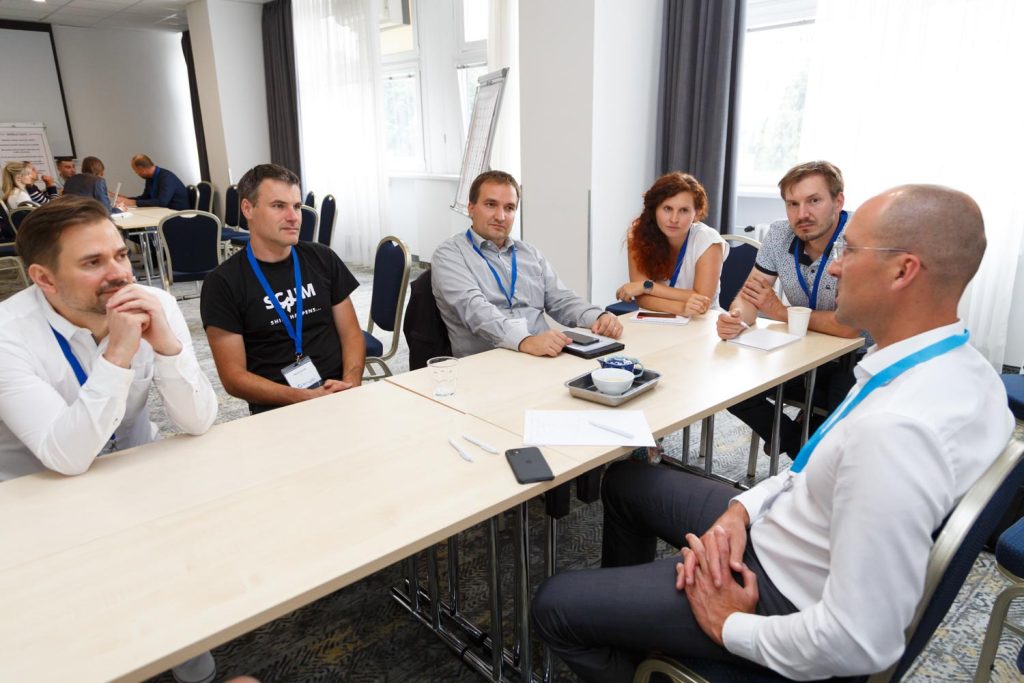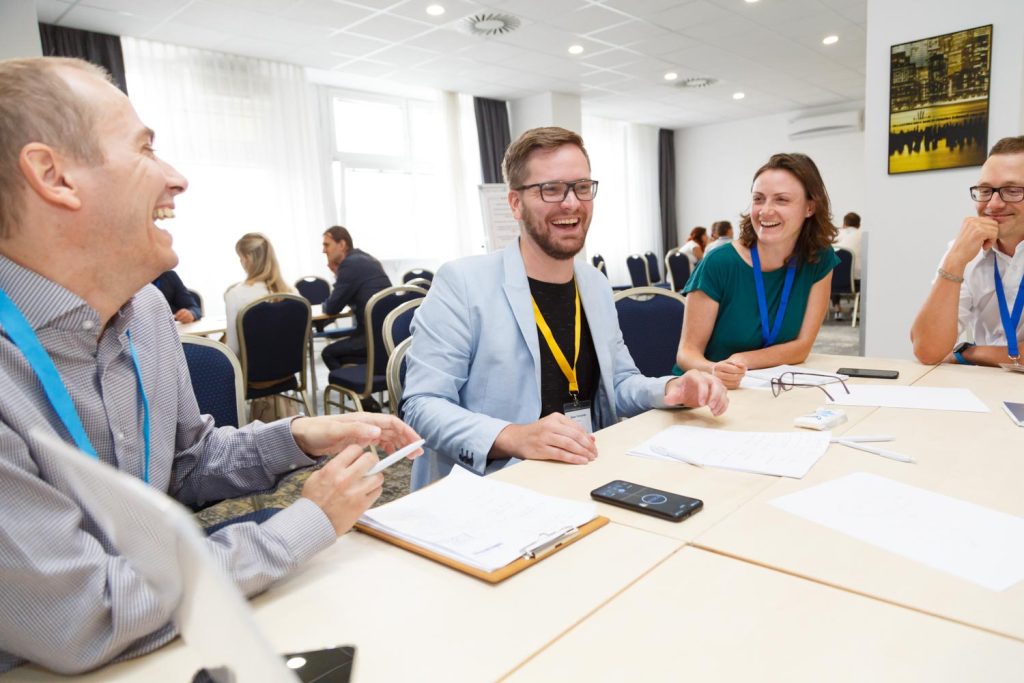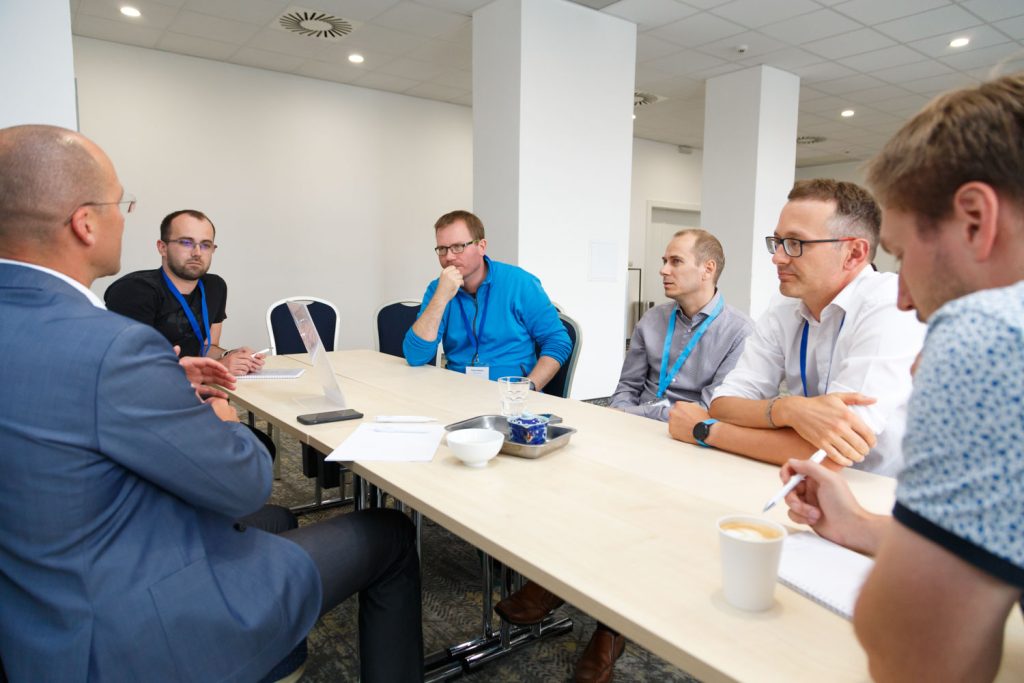ANNOTATION
World Café
The “World Café” method allows groups of participants to share experiences and opinions and to seek answers to questions that are defined in advance. There will be 9 thematic tables, including experienced discussion moderators. Time will be allocated for each discussion for 25 minutes. During the given time for the World Café, you can complete a total of three discussions. The goal of the method is not to arrive at clear conclusions, goals or plans at any cost. Rather, it serves as an exchange of ideas, a broadening of perspectives on the topics at hand.
Table 1
Salaries on the pillory: Why (not) keep quiet?
Radek Petr
Is it time to break the silence around salaries in your company? Come discuss and start unravelling the delicate relationship between money, power and trust at work.
Is it just about money, or is there more to it? We’ll explore the nooks and crannies of your deepest fears: from feelings of unfairness, to fears of breaking team spirit, to uncovering skeletons in the closet. What would happen if your company published the pay rates of all its employees right now? Would transparency or secrecy ultimately prevail?
Come test your own comfort zone and beliefs.
Table 2
FaST the way to self-organized teams in Kontent.ai
Filip Tesař
In this discussion, we would like to open the topic of self-organization and present our way to it in the context of FaST framework deployment (more about the transition to it in our case study). We want to discuss what the transition to a self-organizing collective that is responsible for what to do, when and how to do it has given and taken away. What concerns we faced at the beginning, where we got to during our journey, how the work of the different roles that work with the team has changed, and we can touch on a lot of other related topics. We’ll also be interested in your experiences with self-organization in cross-functional teams/collectives with low-teens.
Table 3
The most common team effectiveness blockers and how to solve them
Ondřej Střeštík
Nowadays, terms like “high performing team” and “high integrity commitment” still resonate. However, despite the considerable attention paid to these topics, we repeatedly encounter obstacles to achieving the ideal state. These blockers are not limited to external influences such as management attitude or organizational structure, but we often encounter internal barriers as well. Key ones include the mindset of individual team members, which can limit the group from realizing its overall potential. Let’s look together at the most common blockers and explore ways to address them effectively.
Table 4
Adaptable organization: how to do it and what are the disadvantages
Zdeněk Soukup, Milan Schwarz
Jsme Y Soft a děláme Large Scale Scrum (LeSS) v Brně. Tým 16-ti sedmičlenných vývojových týmů s jedním společným backlogem, jednou společnou roadmapou, jedním product ownerem.
Pojďme se pobavit co to znamená mít týmy, které dokážou vzít jakýkoliv problém a vyřešit ho end-to-end. Jaké mechanismy takovéto nastavení ve firmě podpoří, co ho zabíjí. Probereme, jaké vidíme výhody vysoké míry adaptability a čím za to organizace platí.
Table 5
Can you be Agile, without being Lean first? What do Agile and Lean have in common?
Bastiaan Brouwer
Both Lean and Agile approaches share a commitment to efficiency, continuous improvement, and customer-centricity. However, they diverge in their origins and specific practices. Agile, originating in IT, emphasizes iterative development cycles, stakeholder involvement, and adaptability to change. On the other hand, Lean, rooted in the Toyota Production System, focuses on waste reduction, streamlined processes, and visual signals.
But is Agile really only linked to IT and Lean only to production? Are there cultural clashes applying Lean and Agile outside their original context?
And can Lean and Agile harmoniously coexist? Can you be Agile, without being Lean? What happens if you improve your product, but not improve your process?
How can leaders foster a culture that supports continuous improvement, collaboration, and experimentation?
And is there any future for Agile and Lean in an age of ever increasing complexity?
Come and join this World Café table facilitated by Bastiaan Brouwer, Lean Master Black Belt, Certified Scrum Master and Scrum Product Owner.
Table 6
Practice engaging leadership
Andrea Darabos and Alexander Krause
We will align on understanding “inviting leadership” and then we will go right into practice. You are invited to craft a first invitation and learn by doing. Then we will discuss how you can transfer this technique to your work context. In the end we will reflect on how this pattern can be used to transform organizations (OpenSpace Agility).
Table 7
How to transform a traditional company and not create a combative atmosphere?
Fero Baník
Free or decentralised companies sound great, but let’s be honest – most of us don’t start (and sometimes don’t end) in them Let’s discuss together how we can make incremental changes in a traditional company so that management is the responsibility of the majority, people feel like co-owners and the company culture thrives. No lofty talk or consulting nonsense, but real life: The discussion will be led by Fero Baník, who will use the example of the transformation of his own assembly company Baník and Son to show that something can always be done and that the struggle is primarily with oneself.
Table 8
How to have relationships, family and work differently - freely without hierarchy
Hana a Radek Majerovi
What if we can live differently? We will share with you our experience of more than 15 years of single life in our family and our lives at work. How can we live differently? What if you don’t have to tell others how to do it? What if no one has to tell you how to do it? How can everyone be a leader?
Table 9
How to make effective retrospectives: The most common mistakes and blockers
Lucie Vinecká, Ludmila Kořínková
Join us for an interactive discussion where we will delve into the world of retrospectives and discuss the most common mistakes that prevent us from using them to their full potential. Let’s get inspired by real-life examples and share our own tips and tricks.



